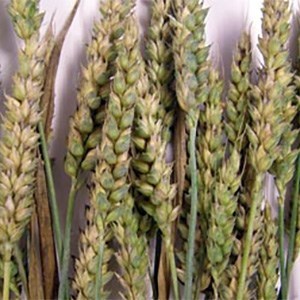Contact
magnus.karlsson@slu.se, 018-671837, 070-2418024
mukesh.dubey@slu.se, 018-672540

Great expectations are placed on the fungus Clonostachys roseas potential as a future biocontrol agent against a number of different diseases. A new study from SLU reveals that C. rosea utilizes almost entirely different sets of genes to deal with different disease fungi, even though they are dealt with in almost the exact same functional way. This may be used to fine-tune different agents towards different diseases.
For the agriculture of the world to yield rich harvests and sustainable profit, pathogenic microorganisms must be kept at bay. Chemical pesticides have long been the given solution, but both the political and scientific understanding, as well as the public, is nowadays that the use of such substances need to decrease. The most interesting alternative is called integrated pest management, i.e. a sophisticated mix of crop rotation, soil treatment, resistant crops and biological control.
Biological control means the use of natural antagonists and competitors to the damaging microbes, such as fungi and bacteria parasitizing on other fungi and bacteria, thereby preventing them from damaging the crop. One of the more promising antagonists for a variety of such applications is the fungus Clonostachys rosea. C. rosea has many coveted traits making it interesting as a competitor. It can deal with the hostile mircoenvironment the pathogens create by effectively detoxifying itself, but it can also degrade cell walls and induce the plants' own defence reaction and boost its growth.
Antagonists with a broad spectra of hosts, such as C. rosea, are commonly necrotrophs. These are distinguished by not needing a living host to leech upon, but may kill it and degrade its cell walls. Since they do not need to outwit individual hosts' signal systems to avoid detection, they may attack many different organisms with the same weapon. It has however not been known whether C. rosea adapts at all to the fungus on which it parasitizes. This has been investigated in a new study from the Department of Forest Mycology and Plant Pathology at SLU. Mukesh Dubey is one of the first authors of the article.
- C. rosea parasitizes on a number of known pathogenic fungi, but in this study we grew it together with Botrytis cinerea, causing grey mold, and Fusarium graminearum, causing Fusarium head blight on wheat and barley, and as a control together with itself, Mukesh says. We isolated RNA from the interaction zone where the fungi meet, and compared the results to find out which genes increase their activity (upregulate) and which decrease (downregulate).
The researchers found that C. rosea has both overlapping and species specific response mechanisms towards different hosts, but surprisingly, the large majority was specific for the respective species; in the interaction with either fungus, 41 genes were significantly upregulated, but only six of these were affected by both fungi. However, 24 were upregulated only by F. graminearum and eleven only by B. cinerea.
- Interestingly, the function of the affected genes are much the same for both fungi, Mukesh says. There are transporters, pumping unwanted compounds across the cell membrane to detoxify the cells, and cell wall degrading enzymes, that are needed to degrade the host fungus, but the genes are not exactly the same between the treatments and also present in different amounts. For example, only four transporters are upregulated in the interaction with B. cinerea, but seventeen with F. graminearum.
- This is a little contradictory to the common conception of nectrotrophs, Mukesh says. It is often assumed that they use the same battery of weapons regardless of the enemy at hand, but our results show that C. rosea has a distinct ability to adjust its methods based on the host, even though the functional purpose does not appear to differ.
Magnus Karlsson has been the leader of the project.
- These results are particularly interesting because they suggest that different C. rosea individuals may be differently specialized on parasitizing different fungal species, he says. From a biological control point of view this is promising, since it may allow for the development of a battery of control agents with different efficacy against different diseases. That would be an advantage, both for the effectiveness of the treatment and the risk that the pathogens acquire resistance towards it.
Text by Mårten Lind
magnus.karlsson@slu.se, 018-671837, 070-2418024
mukesh.dubey@slu.se, 018-672540
Read the full story here: https://onlinelibrary.wiley.com/doi/full/10.1111/eva.12609